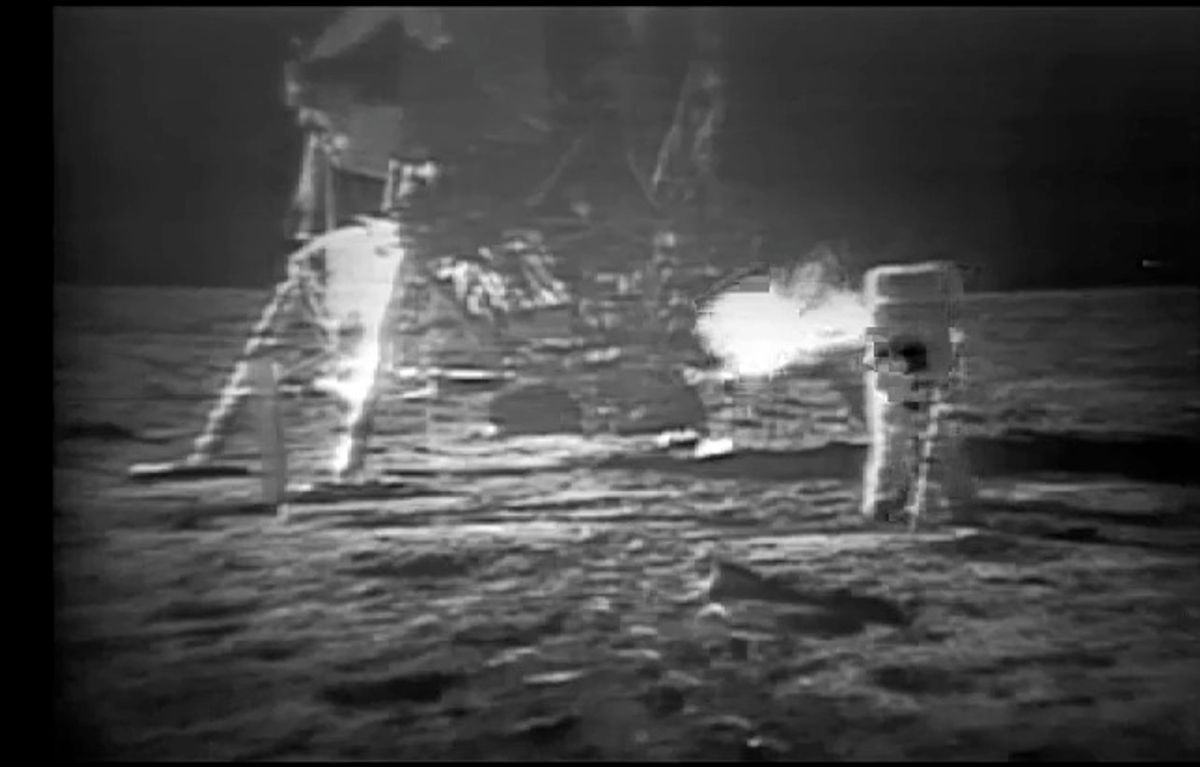NASA later recorded over the original videotape of those images in order to save the cost of buying new tapes. It didn’t mean that the recording of the event was lost, but that the only copies remaining were simply that, copies, mostly made by TV broadcasters, and had even less resolution that the original.
NASA turned to Hollywood, specifically, Lowry Digital Images, to fix the problem. Lowry’s an amazing company that works magic on old film and video—I first encountered the firm’s work when profiling then-Lowry employee Ian Caven for IEEE Spectrum’s Dream Jobs Special Report. Caven developed original solutions to difficult image processing problems for Lowry, developing software to remove interference, mold damage, and flicker from old movies.
To restore the Apollo 11 images, the digital imaging specialists at Lowry used a number of copies of the video, including an 8 mm film recorded by pointing a handheld camera at a video monitor at Mission Control. Some sections of the video existed only on this 8 mm film. Lowry Digital used its standard temporal image processing technique, in which it compares information from large numbers of consecutive frames to calculate the optimal contrast, resolution, and noise level, to process the images. It also developed new techniques to fix brightness, ghosting, and smearing. NASA instructed the restorers to leave in some of the original flaws, like dirt on the camera lens, for authenticity.
Some short highlights from the restored video are available now; the complete restoration project is slated to wrap up in September.




